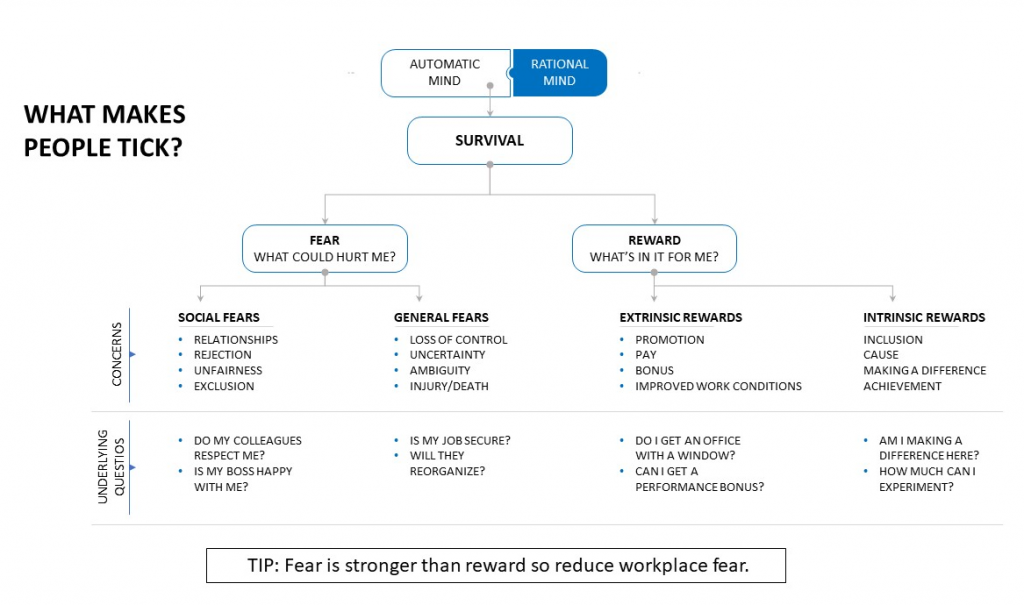
As you stand at the construction site joking with a colleague, you hear beeping behind you. A mammoth truck backs up and is about to crush you!
You dash out of the way at the last minute. Phew.
It’s good the truck let you know it was coming—those beeps are a built-in physical safety feature.
Now safe and away from the truck, let’s switch from physical to psychological safety. In my last newsletter, we stressed the importance of establishing psychological ‘safety in numbers’ with Quick Wins to improve communications flow. A safe environment is also essential for creativity.
Let’s go back to the construction site—you are joking with a colleague (reward) when both of you hear beeping from the truck (threat).
Do you move out of harm’s way, or do you continue your discussion?
Of course, you move. Fear trumps reward whether you are at a construction site or your workplace.
For example, if an employee worries about looking silly in front of the boss or fears being humiliated, potential reward bonuses won’t motivate them to take a risk by speaking up.
How do you reduce this fear? Small behaviors that signify you acknowledge and value others can foster a positive work environment.
A low-fear workplace allows rewards to work.
Before I list these simple safety-building behaviors, let’s see why the safety topic is so important.
As mentioned in previous newsletters, our most powerful instinct is survival.
Although they may be subconscious, threats and rewards drive us. If we move away from perceived danger and toward a reward, our brain signals to us that everything is fine.
The following are a few implications for you as a manager:
Here is the What Makes People Tick schematic showing how this all fits together:

Below are some specific behaviors that you can use with your employees.
I collected the list by interviewing a cross-section of CIA employees working for good bosses.
Later, I confirmed that the list corresponded with behaviors of good bosses at other government and private sector organizations.
This chart shows simple ways that you can establish safety.

These behaviors are small and easy to adopt. Could establishing psychological safety really be this simple? Yes.
Employees watch your behaviors to gauge whether you are safe to approach and confide in.
Remember, every time you walk into the workplace, employees’ antennae are up. You have a chance of reinforcing psychological safety, so think of yourself as that construction truck backing up. If you don’t beep, you can be a threatening menace.
So, beep by smiling, saying hello, and having a little fun in the office!



When appropriate, be empathetic toward your employees—understand that everyone goes through different life experiences.
Above all, listen and create a human connection.
Put one or two of the safety behaviors listed above on your daily to-do list to remind you to complete them.
Study the What Makes People Tick schematic above to learn what goes on in employee minds—this will be invaluable to you over your management career.
Print it out and refer back to it.
Do you want to go deeper into the subject of establishing safety with your employees? Would you like to reduce workplace fear to boost creativity and engagement with the people you manage?
Haben Sie Fragen zu unseren Zertifikatslehrgang "Circular Economy"? Senden Sie uns Ihre Daten und Ihren Wunschtermin und wir melden uns schnellstmöglichst bei Ihnen. Wir freuen uns darauf, Sie bestmöglich beraten zu dürfen!
| Absenden |
Sie müssen den Inhalt von reCAPTCHA laden, um das Formular abzuschicken. Bitte beachten Sie, dass dabei Daten mit Drittanbietern ausgetauscht werden.
Mehr Informationen